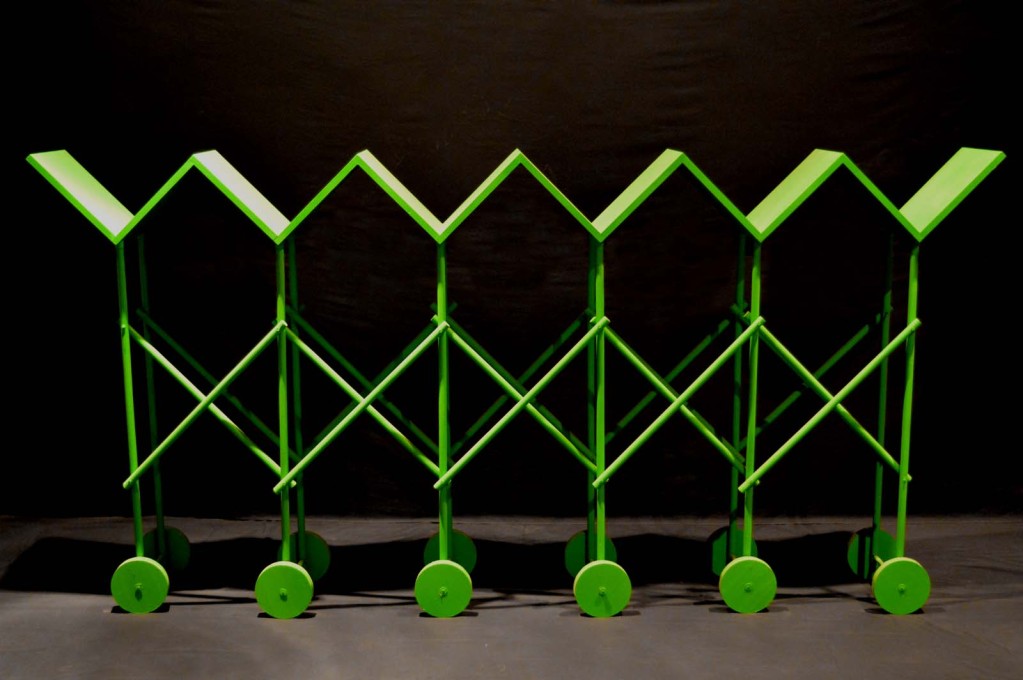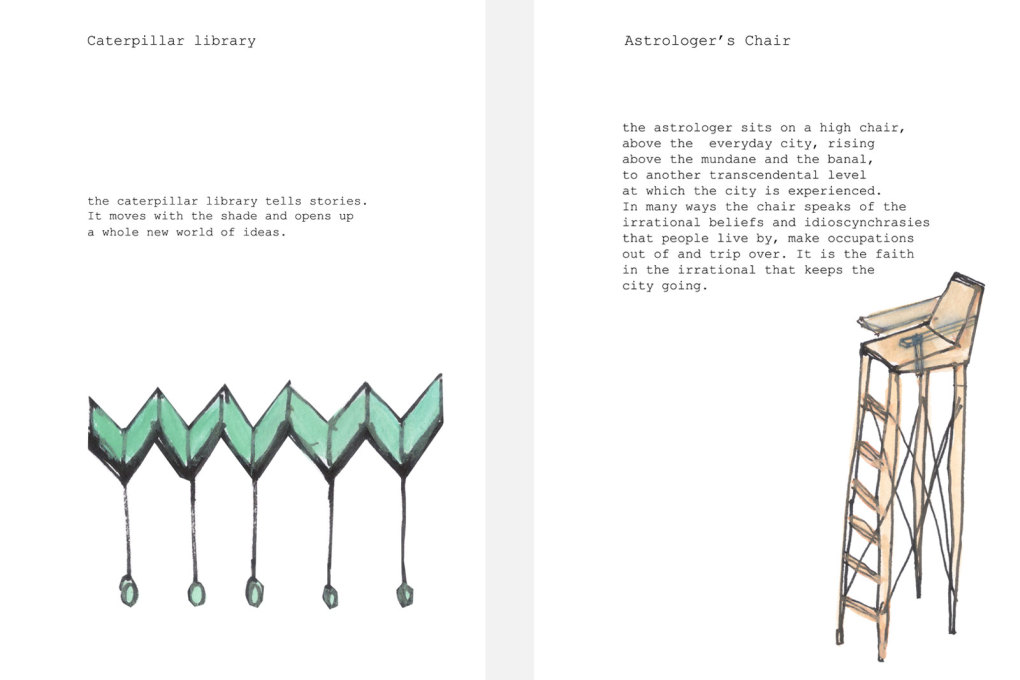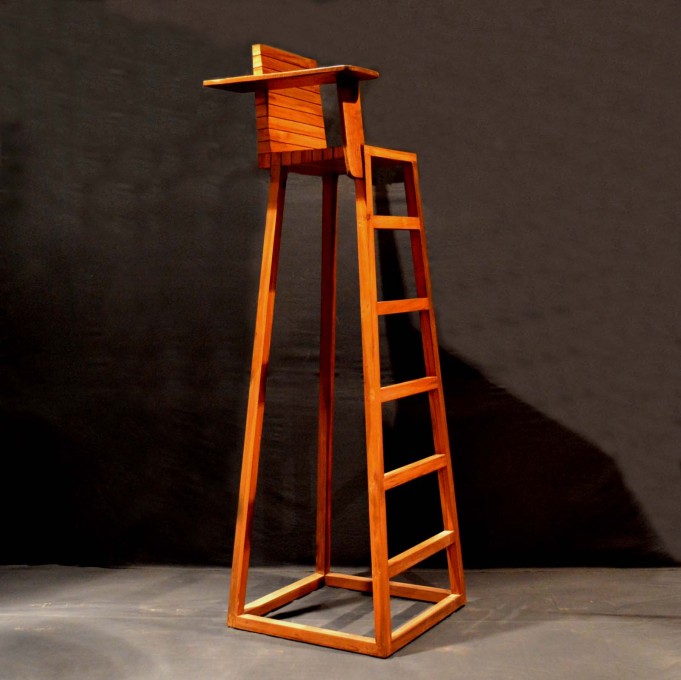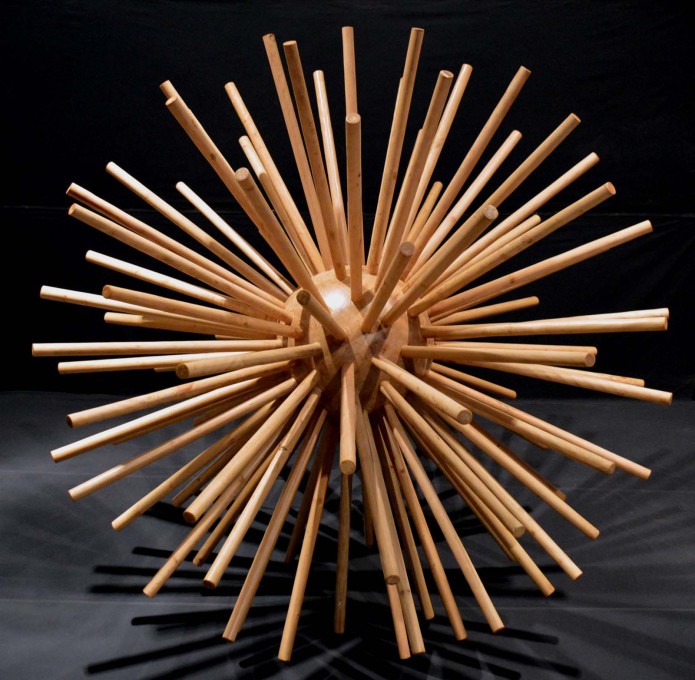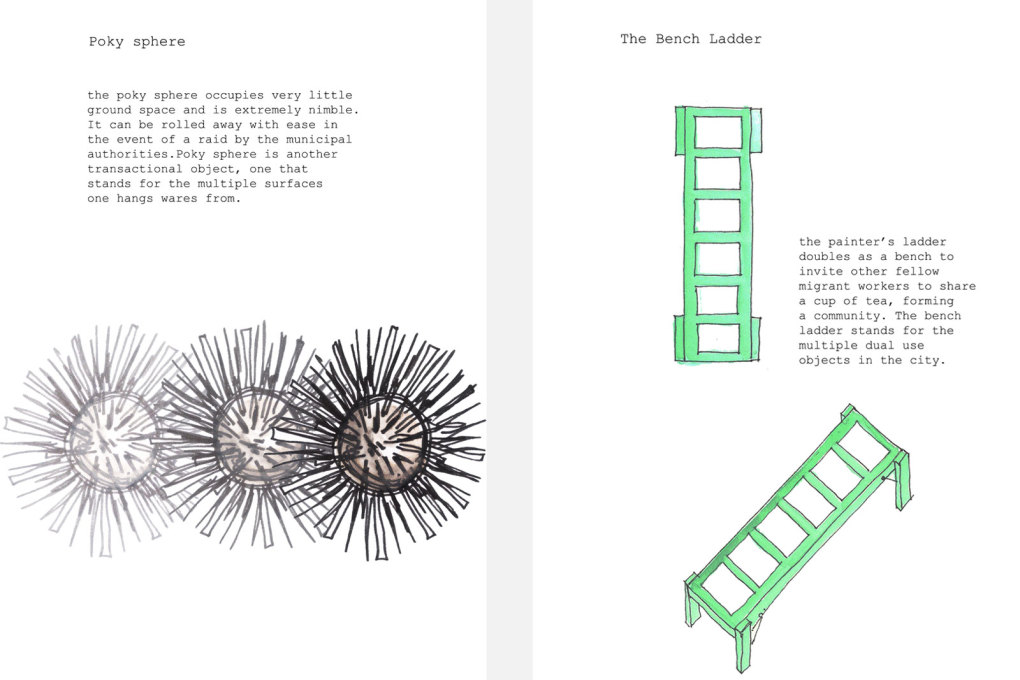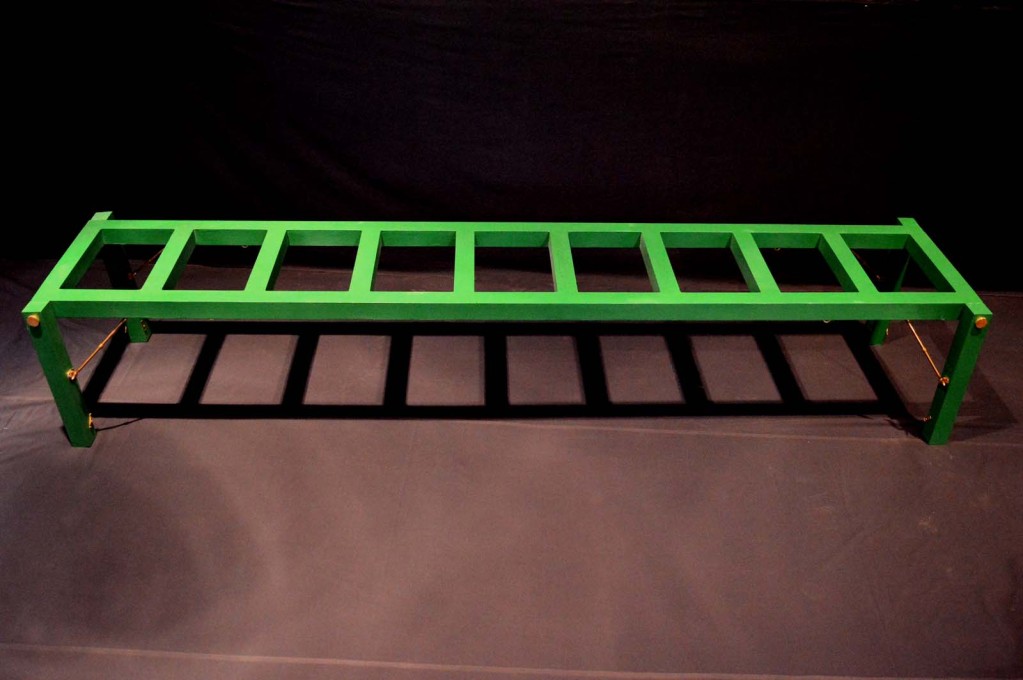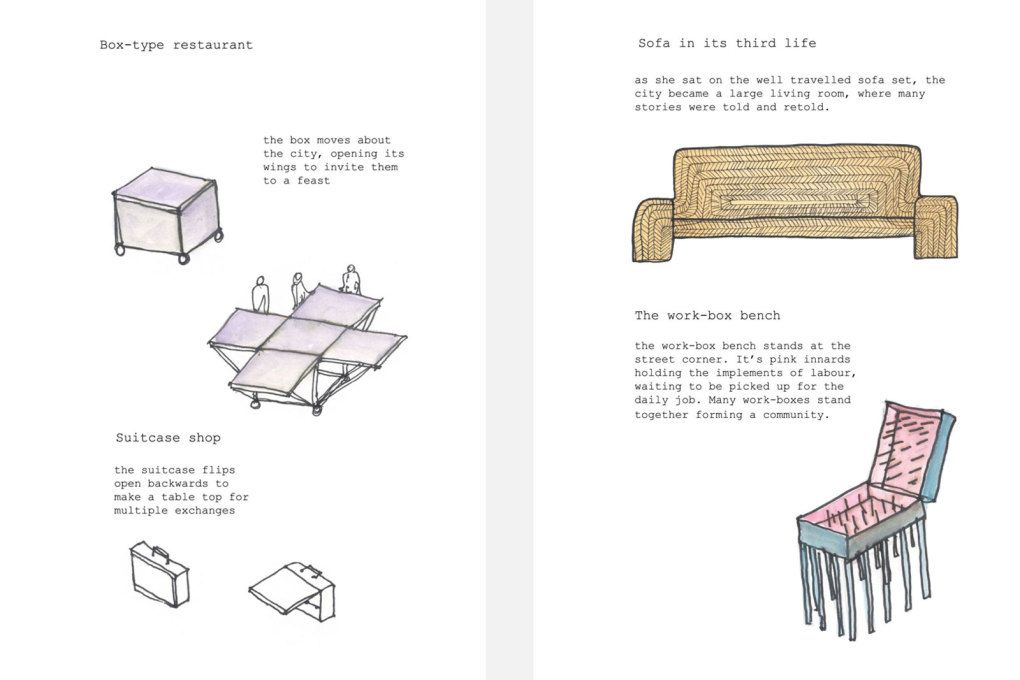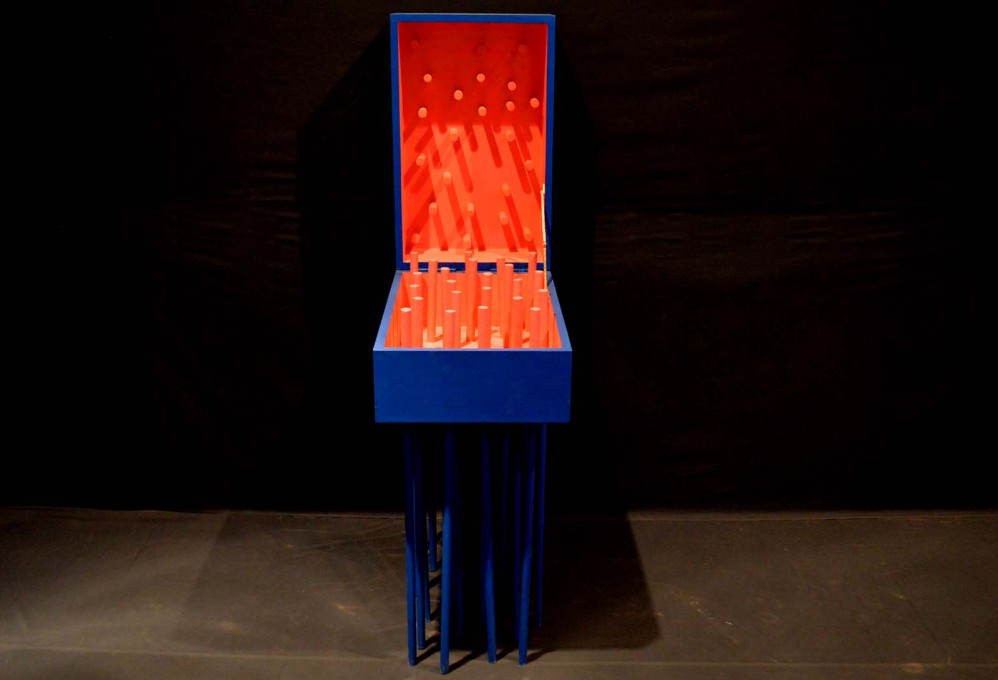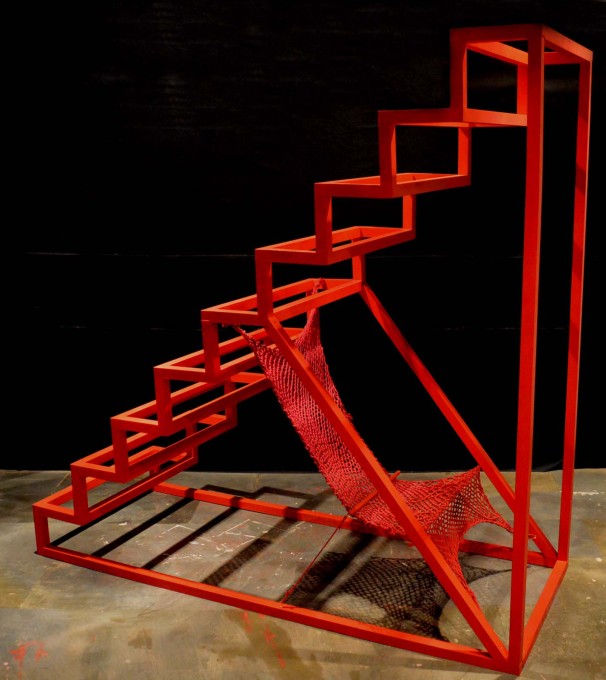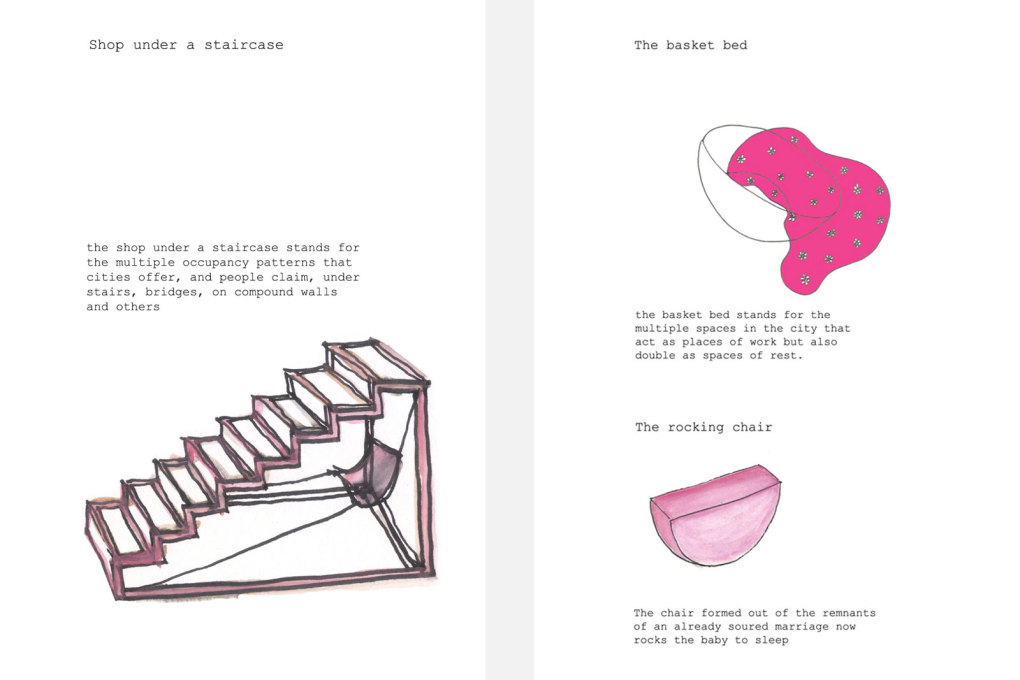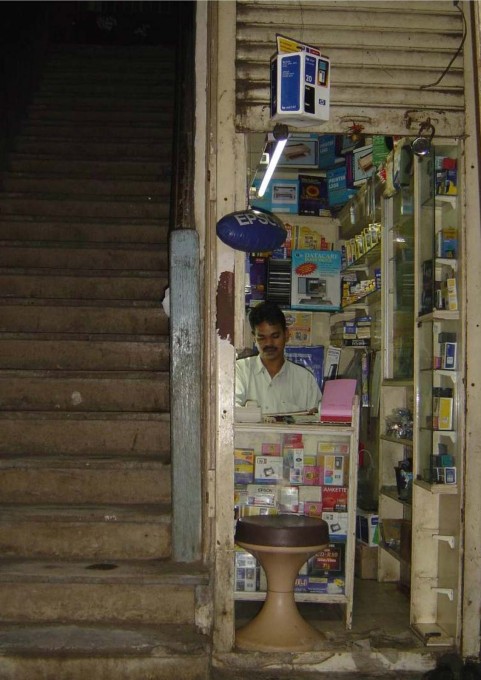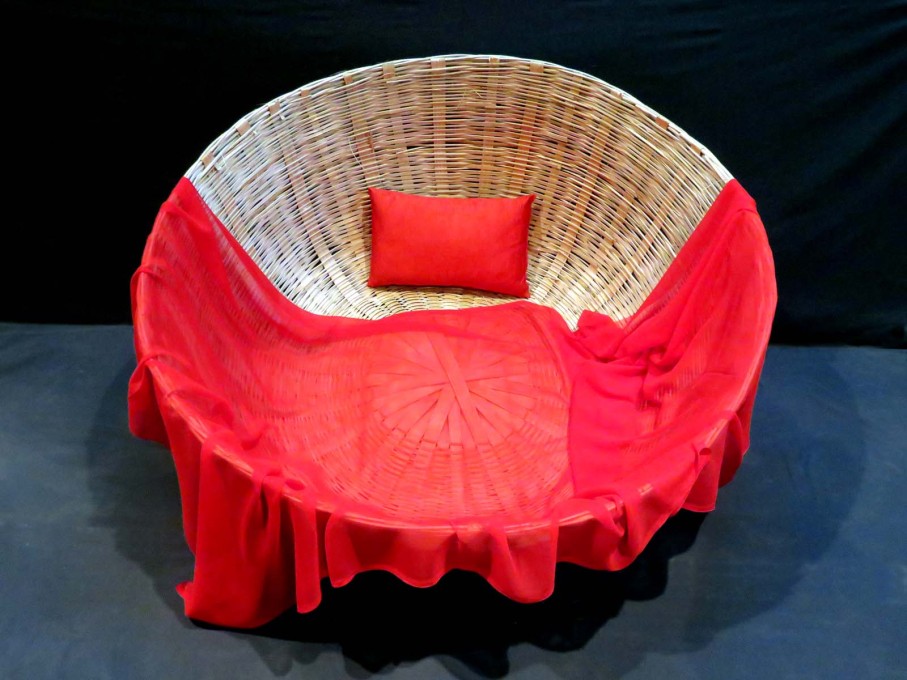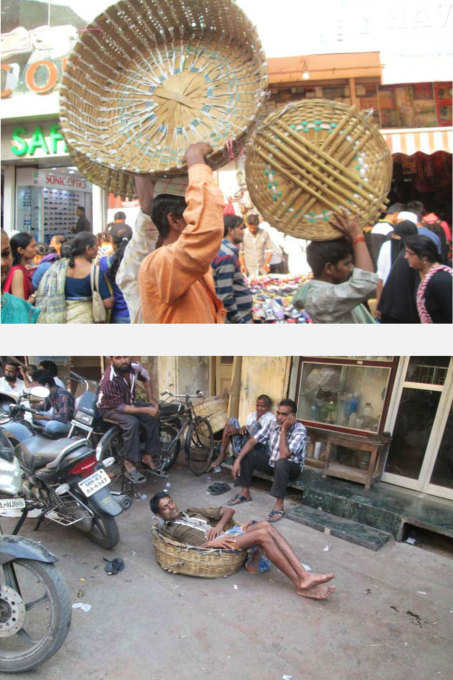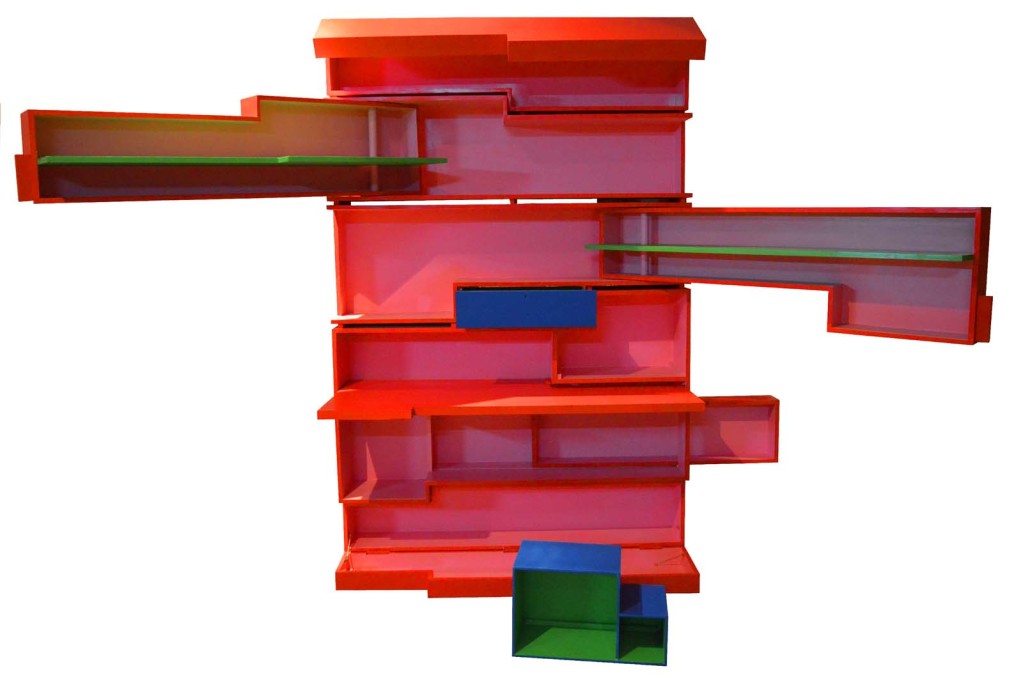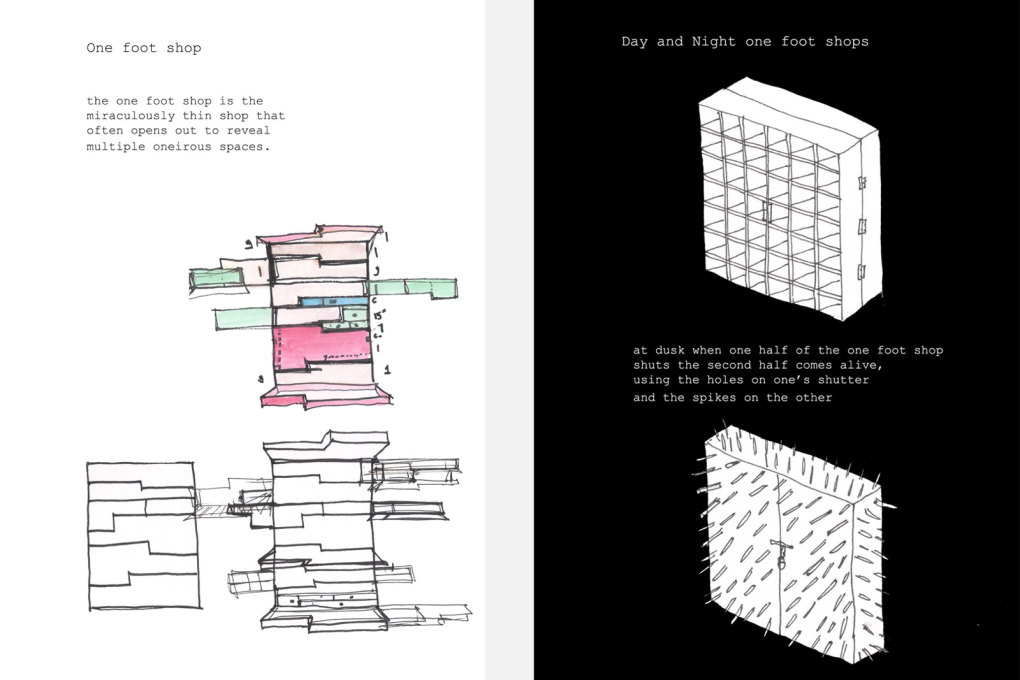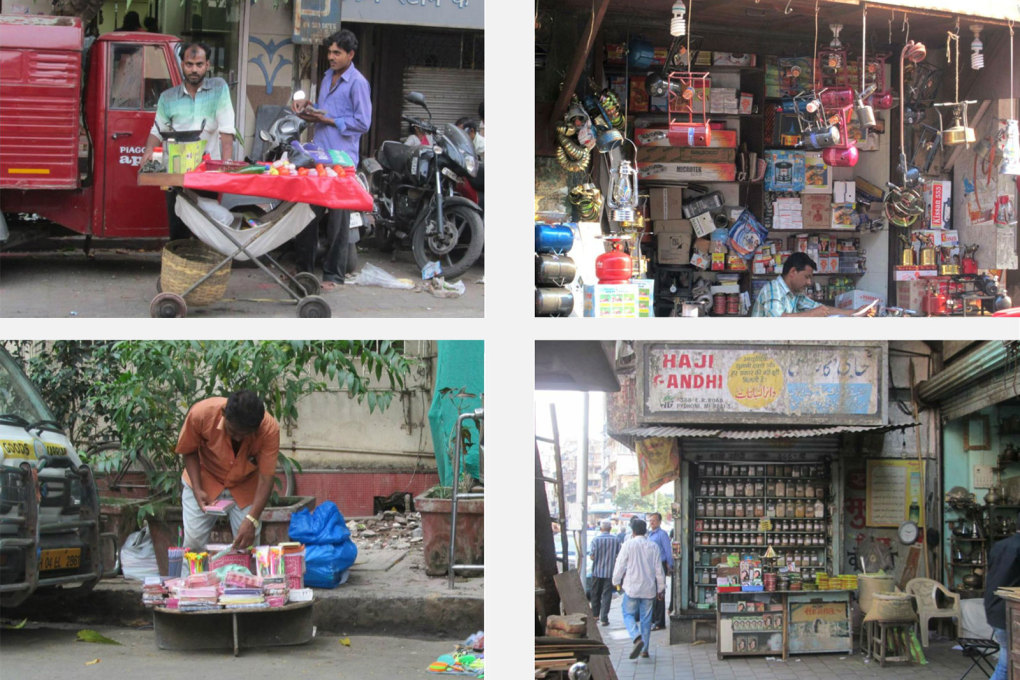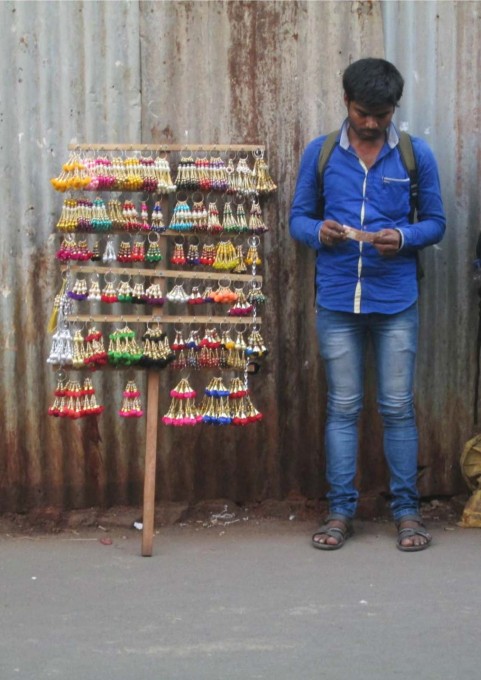As part of their field studies on the streets of Mumbai, architects and urban researchers Rupali Gupte and Prasad Shetty looked at the ever-changing ad hoc objects, fashioned for retail display or tailored for other functions, that occupy the in-between spaces of the city. As Roshan Kumar Mogali reports, this research led to their art project Transactional Objects currently on show at the Venice Biennale, which explores imagined forms of such seemingly utilitarian objects, objects which also embody the hopes, dreams and social interactions defining people’s lives.
Lamington Road in Mumbai is known for shops that sell electronic goods and gadgetry. Tiny shops are crowded together along the pavements: even wall spaces between neighbouring outlets are rented out to other traders. These tiny one-foot wall shops, embedded a foot into the wall and projecting out a foot onto the pavement, are typical for Mumbai.
The one-foot shop, along with shops under staircases and other ingenious, compact temporary retail sites, were the inspiration behind urbanists and artists Rupali Gupte and Prasad Shetty’s work Transactional Objects at this year’s 56th Venice Biennale, curated by Okwui Enwezor. Their project explores the “unclear geographies, absurd lives, unstable forms and co-existing contradictions” of the perpetually changing city, and the production of what they term Transactional Objects – ad hoc retail display or storage structures fashioned for these in-between spaces, tailored to give them function.
“These objects are not just utilitarian, facilitating transactions”, say Gupte and Shetty: “They are quirky, erotic, sedimented and absurd. In their absurdity, they are instances of dreams trying to take shape and aspirations trying to get worked out. Transactional objects are not designed, they form themselves. And they change constantly because the city changes constantly.”
Gupte and Shetty observe several processes around these “transactional objects”: what they term “settling”, “tripping” and “blurring”. “Tripping” refers to the very specific needs, desires and obsessions driving different people on the street, “settling” refers to the process by which “people come to terms with each other” – in which Gupte and Shetty see these objects as key players, creating threshold spaces and structures for people to engage with each other.
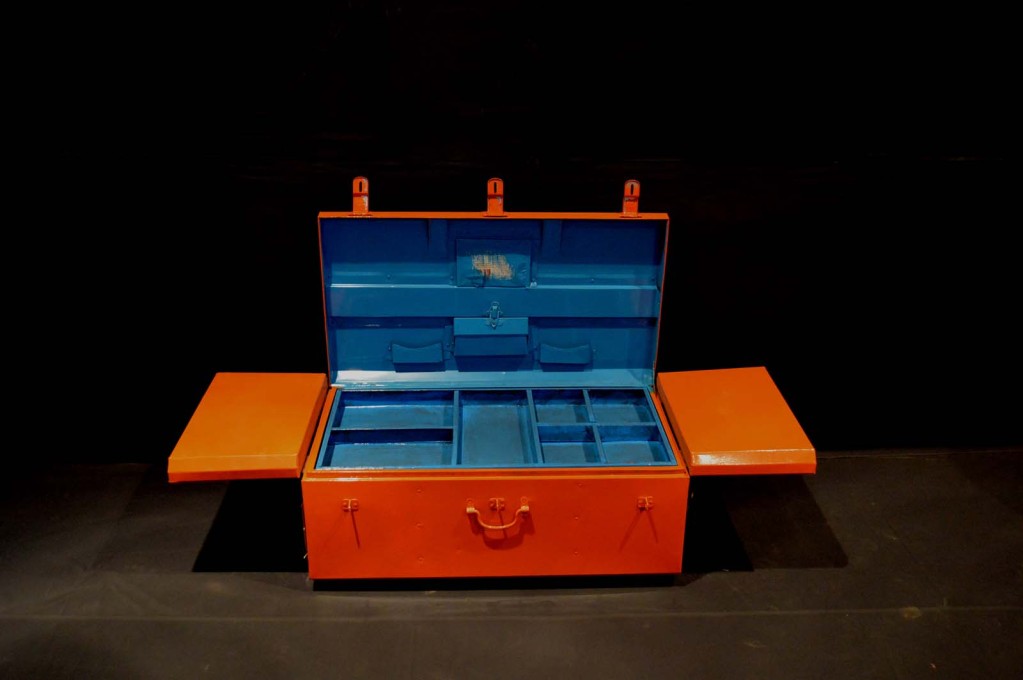
Through these objects, spaces in the city and their use also get textured and transformed, often diffusing differences between public and private space, between urban property rights and boundaries and between notions of inside and outside space – all the ideas that usually define spaces and buildings in a city through clear demarcations. This they describe as a process of blurring. “This diffusion produces a blurred form of the city, where boundaries get constantly made, erased and remade through numerous claims. The morphing of building envelopes, the mutations in plot shapes and diffusion of edges constitutes the blur. The logic of the city, its enterprise, property relationships, and much of life gets worked out in this blur.”
On Lamington Road, where it is often difficult to tell where one shop ends and another begins, everything along the edge of the street including customers and shop-owners diffuse into this blurred space – a transactional space – that allows a multitude of activities to take place.
In the exhibition Transactional Objects, the objects on display are Gupte and Shetty’s speculations on the next transformation that some of these street objects might go through, their next metamorphosis to reflect the ever-changing city around them. As such they seem to be arguing against any utopian or apocalyptic imagining of the future, instead presenting an equally powerful but nuanced view of how a city – and its use – develops through incremental change.
– Roshan Kumar Mogali is a writer, journalist and editor from Pune, India. He has previously worked at Domus India.
Transactional Objects
Until November 22, 2015
All The World’s Futures
The 56th International Art Exhibition
Arsenale, Castello
Venice, Italy




